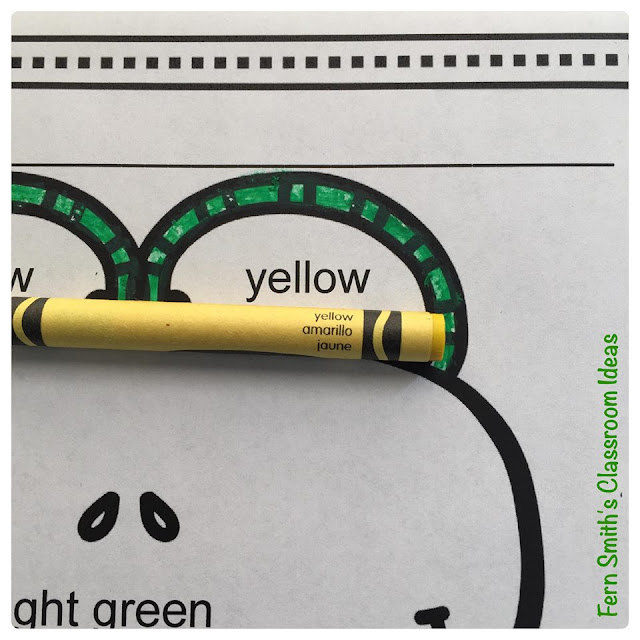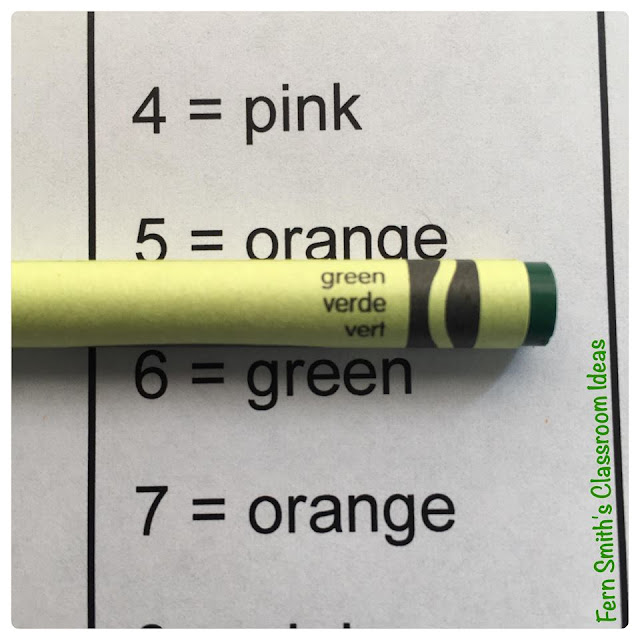
Using Crayons For Your Non-English Speaking Students
For most of my career I've been a teacher in Florida and Texas. Having ESOL certification meant I was usually the first to get all non-English speaking students. I love them because I can relate.
My parents came to America from the United Kingdom, they wanted to see America, they wanted to see the World. When I was born that didn't stop them from moving back and forth to England and the US, as well as up and down the east coast. Always being new, always entering a school in the middle of the year, not to mention two or three schools in one school year made me very outgoing, eager to please my teachers and make new friends.
However, I could always speak the language, many students who arrived at my door were Level 1 students, they knew no English, they were new to America, sometimes new to school at 8 or 9 years old. We don't turn them away, we don't say, come back when you can speak English. We love them and move them forward as fast as we can.
Today I want to share my favorite tip with a simple box of 24 count crayons.
I would buy the 24 count crayons in bulk when the Back to School sales were OVER. Sometimes you can get them as low as 5 cents a pack and I would try to take what was left, if I could get 100 packs for the upcoming year for $5.00, I was golden for a long time. Click here to read another method for getting supplies from churches, family and friends, that I have written about in the past.
As you know, we don't have "office hours" if a new student is at our door, we don't get to sit down and "get to know them" immediately. You can't tell the rest of the 24 or 32 students, "Hey, don't mind us, we'll get to know each other, y'all can take the morning off." Yeah, I couldn't even finish typing that without cracking up! So life must go on until you can assess this child.
So on with my tip, two quick tips actually. First assign your new student to the kindest boy or girl in your classroom. Let them help your new student with your routines, how we line up, where we go after lunch, where we turn in work, etc. By assigning a student to help, you will not lose as much academic time, and your new student will not feel so lonely, having made a fast friend on the first day.
Next, no matter what your class assignment is, give your new student a Color By Numbers or Color By Code worksheet. If you are K or 1st grade, a Color By Code with just colors is perfect. Show your student how to line up the color word on the crayon with the color word on the page, like the example below. Many crayons have English, Spanish and French all on the same crayon, so that crayon instantly becomes a mini color word dictionary.
 |
| Color By Code Awesome Animals Know Your Colors |
This now gives your new student a routine, something to keep busy with, that is still academic until you, or a school specialist, have time to assess where the student is academically. AND... I've never met a child that doesn't love to color!
Now, if you are 2nd to 5th, even if the child has never been to school, you can give them a little bit harder of an assignment. A math Color By Number, I recommend addition or subtraction, because with 24 count crayons, you have given the student math manipulatives, without having to drag out buckets of counters immediately. Two minutes flat, you can model it at their desk like the picture examples below.
Show them the code box...
 |
| Color By Numbers Awesome Animals Mixed Addition |
Next, line up the crayon with the word,
 |
| Color By Numbers Awesome Animals Mixed Subtraction |
Depending on how EXACT you want to be, you can request orange to be exactly ORANGE, but I found by allowing students in general, English speakers and Non-English speakers, to use orange red or red orange, it created some nice differences in the students' final work.
 |
| Color By Numbers Awesome Animals Mixed Multiplication |
In those two minutes, you can also teach a non-example, match up the word orange to the green crayon, even the lowest of the lowest readers can tell that the one to one correspondence of the letters do not match up. Ask them to find the correct word on the page....
 |
| Color By Numbers Multiplication Color By Code Bundle |
Now, in TWO minutes, you have given this new child some attention and you basically have an informal assessment of their level of conversational English and basic reading skills.
There, that's my tip, you have not lost control of your class, you have bonded with the new student and now you can answer the classroom phone, because if you are like me, you have missed the deadline to submit your daily attendance....hahahahah, just kinding. No, maybe not #sorrynotsorry :)
I hope this tip can help you and your friends, feel free to pin and share this post.
Starting today, everything, including all my Color By Numbers, in my TpT store is 28% off for the big Teacher Appreciation Sale with the code THANKYOU17 at checkout.
Color By Numbers ~ Awesome Animals
Spring Animals Color Your Answers
HAVING PROBLEMS SEEING ALL THE LINKS AND WIDGETS?
ARE YOU READING THIS IN AN EMAIL OR BLOGLOVIN'?
***Don’t forget that all my new products on TpT are 40% off for 48 hours.***



















Thank you! I am a bilingual teacher and I usually get those students who don't speak English. So that is where I find myself this week. I can speak with them and I normally instruct in both languages but I find that sometimes I need independent work for them while I work with other students. This is a great idea!
ReplyDeleteWonderful, thank you so much. I'm so happy it can help, Sincerely, Fern
Delete